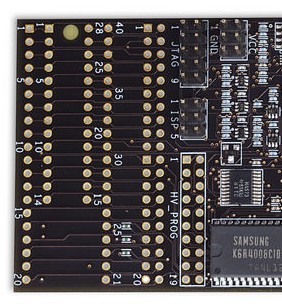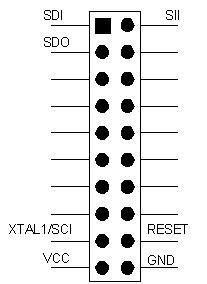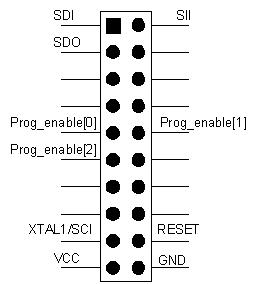4.7 High Voltage Serial Programming Description
Low pin count Atmel AVR devices do not have enough I/O pins to support the full Parallel Programming interface. These devices use HVSP programming instead, which is a serial version of the Parallel Programming interface.
Extreme care should be taken if using HVSP mode to program an AVR device on an external target. The HVSP lines do not have level converters, so it is important that the target board is powered by the AVR Dragon VCC header, and not using another power supply. In addition the AVR Dragon will apply 12V to the reset pin, so it is important that the target board is designed to handle 12V on this line.
The target voltage, i.e. the 5V from the VCC header, must be applied to either pin 2 on the SPI header or pin 4 on the JTAG header. This is because the AVR Dragon must read the target voltage.
To avoid damaging the Target Board, the AVR Dragon or both, it is recommended to only use HVSP mode on devices placed in the 28/40 pin DIP socket on the AVR Prototype area on the AVR Dragon.

The High Voltage Serial Programming (HVSP) interface is found on the HV_PROG header. The figure below shows the pinout of the HV_PROG header when used for HVSP for all parts except ATtiny24/44/84:

The ATtiny24/44/84 uses separate pins for entering programming mode. See the pinout of the HV_PROG header when used for these parts below:

See the Device Connection Sheet section for information on how to connect AVR Dragon for HVSP programming of the different supported devices.
